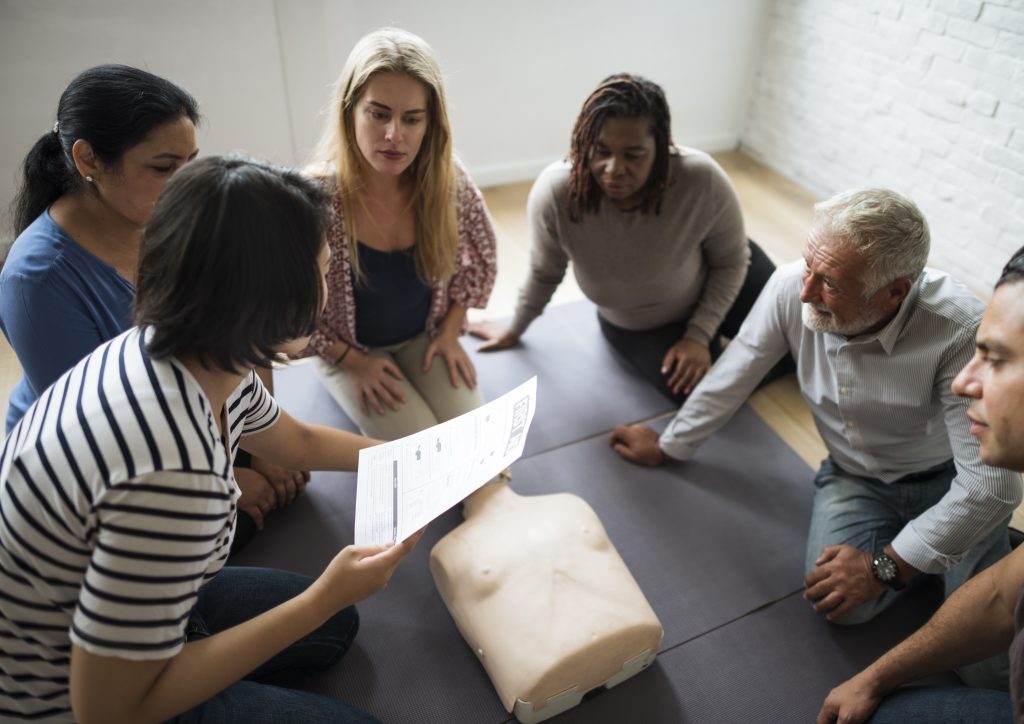
Being prepared for emergencies is crucial, and acquiring CPR (Cardiopulmonary Resuscitation) certification can equip you with the knowledge and skills to potentially save a life. If you’re residing in San Antonio and considering getting CPR certified, understanding the associated costs becomes essential information. This article delves into the factors influencing CPR certification costs in San Antonio, providing a comprehensive overview to help you navigate the process.
CPR, or Cardiopulmonary Resuscitation, is a crucial lifesaving technique used in situations where an individual experiences cardiac arrest. This life-threatening event occurs when the heart suddenly stops functioning effectively, halting blood circulation and oxygen flow throughout the body. In such situations, immediate intervention is critical to prevent brain damage or even death.
CPR involves a combination of chest compressions and rescue breaths. Chest compressions manually pump the heart, maintaining minimal blood circulation, while rescue breaths provide oxygen to vital organs until medical professionals arrive and can administer advanced care.
Earning CPR certification empowers you to confidently act in these critical moments. By enrolling in a training program, you gain the necessary knowledge and skills to perform CPR effectively in real-life scenarios. These programs typically involve:
CPR certification programs are widely available and typically offered by various accredited organizations, including:
These organizations maintain specific guidelines and standards for CPR training and certification. These standards ensure consistency, quality, and effectiveness in the training provided, guaranteeing that certified individuals possess the knowledge and skills necessary to perform CPR adequately in diverse scenarios.
The cost of obtaining CPR certification in San Antonio can vary depending on several factors. Here’s a breakdown of the key elements influencing the price:
Different training providers, such as the organizations listed above or private training companies, may charge varying fees for their CPR courses. Each provider may have diverse overhead costs, course structures, and instructor qualifications impacting their pricing strategies.
The type and level of the CPR course you choose significantly affect the cost. Basic Life Support (BLS) is the most common and widely recognized CPR certification, suitable for healthcare professionals, first responders, and the general public. However, other, more specialized CPR courses, like Advanced Cardiac Life Support (ACLS) or Pediatric CPR, cater to specific healthcare professionals and typically come with a higher price tag due to their more complex content and advanced skillsets.
CPR courses can be offered in various formats, including:
Additional costs might be associated with CPR certification, including:
Based on research and information gathered from various providers, the average cost of a Basic Life Support (BLS) CPR certification course in San Antonio ranges from $60 to $70. However, the actual cost can fall outside this range depending on the factors mentioned above.
Here’s a breakdown of estimated costs based on different course formats:
It’s important to remember that these are estimates, and the actual cost can vary depending on specific providers and course details.
While the cost of CPR certification can be a factor, acquiring this vital skill is an empowering investment in your ability to potentially save a life. Fortunately, several strategies can help you find affordable CPR certification options in San Antonio:
The initial step towards finding an affordable CPR certification course involves researching different organizations and training companies offering these CPR courses in San Antonio. Utilize online resources and reach out directly to providers to gather information, including:
By comparing fees and course details from various providers, you can gain a comprehensive overview of available options and select a program that aligns with your budget and learning preferences.
If enrolling with a group of friends, colleagues, or family members interested in obtaining CPR certification, consider inquiring about potential group discounts. Many training providers offer reduced prices for larger enrollments, making CPR certification more accessible and cost-effective for everyone involved.
Non-profit organizations, such as the American Red Cross, are often dedicated to providing essential services and resources to the community, including CPR training. These organizations might offer courses at lower costs compared to private training companies. Exploring options offered by non-profit organizations in San Antonio can be a valuable strategy for finding affordable CPR certification.
If you are currently employed, check with your employer regarding potential CPR training programs or reimbursement policies. Some companies might offer in-house CPR training for their employees, reducing or eliminating the cost for you. Additionally, some employers might offer reimbursement programs for individuals who acquire CPR certification on their own, encouraging their workforce to be prepared for emergencies.
By implementing these proactive strategies, you can navigate the CPR certification process in San Antonio with informed decision-making. Remember, investing in CPR certification is an investment in your community and a valuable skill that could potentially save a life in the future.
While the cost of CPR certification in San Antonio varies, understanding the factors influencing the price and exploring different options can help you find an affordable and reputable course that equips you with this crucial lifesaving skill.
CPR certification empowers you to take potentially life-saving action in critical situations. While the cost of obtaining certification can be a factor, understanding the factors influencing the price and actively seeking out affordable options can ensure this crucial skill remains accessible. By employing the strategies outlined in this article, you can navigate the CPR certification process in San Antonio effectively, finding a program that aligns with your budget and learning preferences.
Remember, the value of CPR certification transcends its cost. It equips you with the knowledge and skills to potentially make a difference in an emergency, contributing to the well-being of your community and fostering a safer environment for everyone. Take the initiative, explore available options, and invest in this valuable lifesaving skill. You never know when you might be in a position to use your CPR training to save a life.